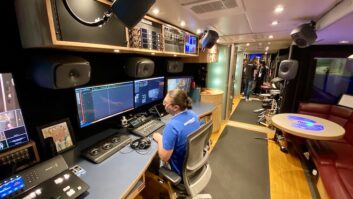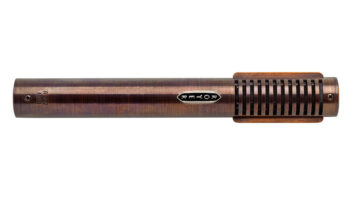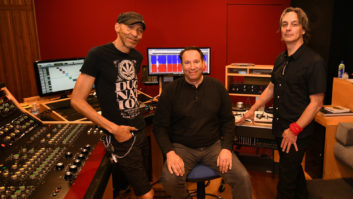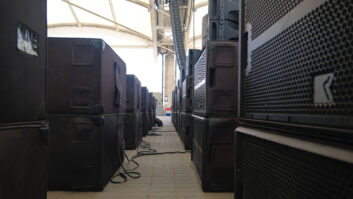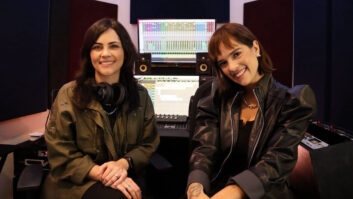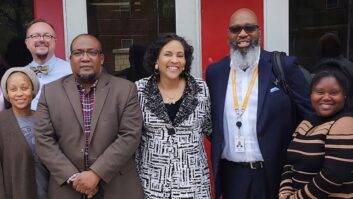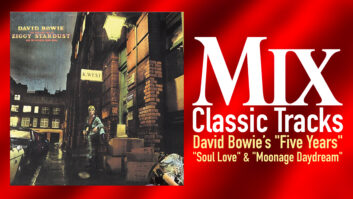Hollywood, CA (April 25, 2018)—Two-time Grammy-winning singer/songwriter Rita Coolidge releases her first album of new material in 25 years, Safe in the Arms of Time, on May 4. The album was recorded, produced and mixed by multi-Grammy-winner Ross Hogarth, with initial tracking sessions taking place at Sunset Sound in Hollywood, where Coolidge has recorded all her solo projects since 1971.
Now in her early 70s, Coolidge first attracted the attention of Delaney and Bonnie Bramlett, an influential rock and soul duo whose band, at one time or another, included the likes of Duane and Gregg Allman, George Harrison, Leon Russell and Eric Clapton. Coolidge also sang background vocals for Graham Nash, Stephen Stills, Joe Cocker and various Delaney & Bonnie & Friends alumni.
But her solo career veered away from pop music when she married Kris Kristofferson—with whom she won her Grammy Awards—into country music. “The vision I had from the very beginning was for this to be the record she never made when she was in Delaney & Bonnie & Friends and [recording Joe Cocker’s] Mad Dogs & Englishmen, playing kickass rock ’n’ roll,” says Hogarth. “Those were some of the greatest musicians ever, who went on to record [Derek & The Dominoes’] Layla and Other Assorted Love Songs and [George Harrison’s] All Things Must Pass.”
Hogarth was introduced to Coolidge in 2015 by her attorney, a mutual friend, and signed on as producer. After helping Coolidge extricate herself from an ill-advised record deal and find a new home at L.A. indie label Blue Élan Records, Hogarth started putting together the songs and the musicians.
“I knew I could make a great-sounding record, but I also needed to make a record of great songs,” he says. Coolidge already had one in her back pocket, “Doing Fine Without You,” written by Graham Nash and Russ Kunkel. Hogarth introduced her to Keb’ Mo’, with whom he has won a couple of Grammys, and singer-songwriter Jill Collucci, which produced the first single, “Walking on Water,” and “Naked All Night,” a song about Coolidge’s parents. Additional material came from the late Stephen Bruton, Hogarth’s longtime best friend; Tom Petty’s former drummer, Stan Lynch; and Grammy-winning songwriters Gordon Kennedy and Tom Douglas.
It was reportedly an emotional project for Coolidge, whose sister was killed in a murder-suicide in 2014. “The thread through these songs is spirituality, positivity and love, and making this record through adverse times,” says Hogarth, whose older brother passed away during the making of the album. “You don’t always get to make a record where your life is tied like a thread through it. It’s a powerful record in that respect. Ultimately, Rita dedicated this record to her sister and my brother,” he says.
Hogarth knew that the all-star lineup of musicians had to include guitarist Dave Grissom, one of his best friends from Texas. Bob Glaub, another old friend, from Hogarth’s days as a roadie, came in on bass.
“I’ve made a ton of records with drummer Brian MacLeod. He knows how to play a song, with great dynamics and a great feel,” he adds.
Rounding out the core lineup was keyboardist John “J.T.” Thomas: “He’s been with Rita for 20-some-odd years and knows her phrasing and how to play piano against her legato.”
The musicians went into Sunset’s Studio 2 for five days in May 2017, he reports, tracking live through the Neve 8088 desk. Vocals and overdubs were recorded at Matt “Linny” Linesch’s Infinitespin Recorders in L.A.’s San Fernando Valley, which is equipped with an API from 1972. Canadian Joey Landreth added slide- and second guitar and vocals to several songs, Hogarth reports. “His tunings and how he uses the guitar are very special. He really added an extra layer of spice.” Hogarth flew to Nashville to record guitar and vocals by Keb’ Mo’ at Gary Belz’s House of Blues Studios.
Before making the record, Hogarth sent his Neumann U67 to mic guru Klaus Heyne for a service. “It came back really stellar,” he says. “The vocal on every song is the U67.
“Rita’s got a big, rich voice and I wanted to capture all of that, so I’m super-tubing it. It’s going into a Retro Instruments OP6, the RCA re-creation mic pre, and I’m compressing it with Steve Firlotte’s Inward Connections Vac Rac TSL4 stereo tube limiter.”
Her voice also has some sibilance, he says. “If you use a microphone that captures everything, sometimes you have to knock some things down, so there’s a fair amount of shaping in the mix. I try to record everything really well so that I have some flexibility to shape tones when I mix.”
As for the instrument tracks, he says, “A big part of my sound is ribbon mics. One of the things I always use is the stereo Royer mic, the SF-24.”

For drums, he says, “It moves around the room and is either in the center stereo overhead or in front of the drums. There was also one on the Hammond B3 and in the crook of the piano. The guitars were Royers, with a [Shure SM]57.”
He continues, “I like a rich, note-y acoustic guitar. To get that, I used Chandler’s Germanium mic preamp, which adds a lot of harmonic distortion. The Germanium pre is a major part of something I’ve been doing for quite a while. I tend to drive it into Pultecs and other tubes and transformers that give even more harmonic distortion. I end up with acoustics that have a lot of tone.”
Hogarth mixed at his hybrid home facility, BoogieMotel, which is well stocked with outboard hardware and plug-ins. “I try to not over-compress when I’m tracking a vocal; I just knock down the peaks. When I mix, I can then pull out my arsenal of compressors,” he says.
“I found a really nice combo platter on Rita’s vocal in mixing where I would go into a Distressor—either 3:1 or 4:1 with some of the different buttons pushed in—then into a Retro compressor, the 176 re-creation, which is super-versatile. For most of the songs it’s that chain, but on a couple of songs it’s the Retro Sta-Level on her vocal with a Distressor in front.”
Hogarth discovered a new secret weapon while recording the Taj Mahal and Keb’ Mo’ TajMo project, he says. “My friend Bryce Gonzales, who is the tech at United Recording Studios, has a company named Highland Dynamics and makes a compressor called the BG2. I used that on Keb’ Mo’s vocal.”
Hogarth has been using the Eiossis de-essing plug-in “forever,” he says, but the new version’s GUI altered the sound. “I went back and forth with Fabrice [Gabriel, company founder] and created some presets of what I used to do with it. Those came in handy.”
One plug-in, released while Hogarth was mixing this album, was a revelation, he says. “The Oeksound Soothe blew my mind. It’s sort of a multiband active EQ, but it’s very intuitive. It soothes a sound that might have a little harshness or grain that you want to get rid of before compressing or doing some other processing. I found it very useful on this record.”
One final shout out, he says, for the album’s mastering engineer, Richard Dodd: “He made some of the greatest records before becoming a mastering engineer. He mastered my last few Keb’ Mo’ records. When I get back his mastering, it still sounds like my record, but better.”
Ross Hogarth • www.hoaxproductions.com
